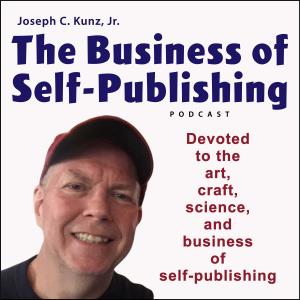The Business of Self-Publishing

Questions to Ask before Writing Your Book’s Introduction
Synopsis
Your book’s Introduction is a crucial first step for readers. It prepares them for what's to come AND ignites their interest to read on. This makes your book’s Introduction an important marketing tool for your book. Here is a short list of questions that you must think about AND answer BEFORE writing your book’s Introduction.
What You Will Learn
1. You will learn the five main sections that a great book Introduction must include.
2. You will learn what questions you must ask yourself BEFORE writing your Introduction.
3. You will learn how these questions will help you write a better book, that will help more people, and make you more money.
Introduction
Before writing your book’s Introduction, you must put yourself into your reader’s shoes. How will they view your book? What might be their first impression? What’s in it for them?
Your readers will only buy your book if they believe that your book is going to help them resolve a problem or need that they are trying to find answers for. Prospective readers scan the Introduction before making a buying decision. Serious readers are sure to devour it.
And with the Introduction positioned at the beginning, it's logical that most people who pick up your book will start reading there. Remember, your Introduction is a crucial first step for readers. It prepares them for what's to come AND ignites their interest to read on. This makes your book’s Introduction an important marketing tool for your book.
So, to help you get started, and get your creative and marketing juices flowing, I have created this short list of questions that you must think about AND answer before writing your book’s Introduction:
Part 1. The Hook
a. Why should the reader buy your book?
b. What is the most telling sentence or paragraph in your book that is about your book?
c. What statement in your book has the ability to grab your reader’s attention?
d. Would that statement grab your attention if you were the reader?
e. What facts and statistics can you use to grab the reader’s attention?
f. What shocking or amazing news headline can you use to grab your reader’s attention?
g. What are the biggest concerns and challenges of the audience for your book?
h. Is your book’s hook big enough to grab the reader?
Part 2. The Connection
a. What can you say to make an emotional connection with your reader?
b. What problems, concerns, and issues, can your book help the reader solve?
c. Why is your audience having these issues?
d. Why haven’t they been able to solve them?
e. Why are these issues so hard to fix or solve?
f. How will you explain to your audience why and how you know about these questions?
g. How will you convince them that you are the one with the answers and that you want to share this information with them?
h. Are your credentials on this topic relevant enough to tell the reader about them?
i. Will the reader care about your credentials?
j. How else can you relate to the reader?
Part 3. The Benefits
a. How will your book help the reader?
b. Will your book be useful to the reader?
c. Will it inspire or help the reader with a problem?
d. What are the benefits to the reader, if they read your book?
e. What are some of the general benefits?
f. What are some of the specific benefits?
g. What are your book’s most important benefits?
h. Why would your reader buy your book?
i. What kind of results have other readers of your book achieved?
Part 4. The Format
a. What will happen in the coming chapters?
b. How is your book arranged?
c. How does your book progress, from basic to the more complicated, for example?
d. What are the steps the reader must follow to complete your system or plan?
e. What features of your book are not shown in the table of contents?
f. Did you include side-bars, pictures, graphs, quotes, facts, stories, interviews, diagrams, appendix, etc.?
g.






 Visit Podcast Website
Visit Podcast Website RSS Podcast Feed
RSS Podcast Feed Subscribe
Subscribe
 Add to MyCast
Add to MyCast